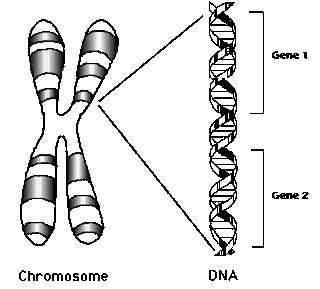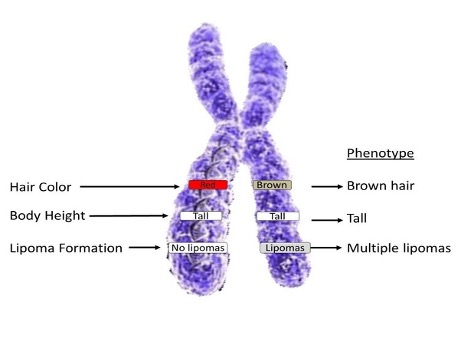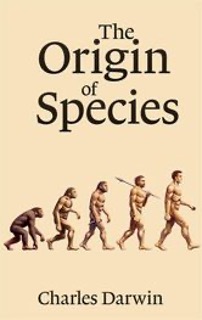🧬 Important Terms
Genetics, Variation, Heredity, Gene, Brief History, Physical basis of heredity
Genetics
- The word ‘Genetics’ has been derived from the
Greekroot ‘gene’ which means to grow into or ‘to become’. - The term ‘Genetics’ [
T] was coined byW. Bateson[T]. UPPSC 2021 - Bateson also coined the term
homozygousandheterozygous. - Genetics is the study of heredity and variation.
Hereditymeans traits or characteristics transmitted from generation to generation. It means such traits are fixed for a particular individual.- Variation means difference. Variation may be hereditary or environmental.
Variation
Hereditary/Genetic variation
- Hereditary variations refer to variations in inherited traits. Such variations (hereditary) are transmitted from generation to generation.
- The cause of hereditary variations is sexual reproduction & mutation.
- Eg:
- Differences in pattern of stripes in zebra, differences in length of neck in Giraffes.
- Identical twins however are examples where there is no hereditary variation.
Environmental/Phenotypic Variation
- It is entirely due to environment. Such variations are temporary and are not transferable from generation to generation.
- Eg:
- Difference in skin colour.
- Under inadequate supply of water and N, a tall plant does not grow properly. So it may become dwarf.
Continuous and discontinuous variation
Discontinuous Variation
- This is where individuals fall into a number of distinct classes or categories and is based on features that cannot be measured across a complete range.
- You either have the characteristic or you don’t.
- Blood groups are a good example: you are either one blood group or another - you can’t be in between. Such data is called discrete (or categorical) data.
Continuous Variation
- In continuous variation there is a complete range of measurements from one extreme to the other.
- Height is an example of continuous variation.
- Continuous variation is the combined effect of many genes (known as polygenic inheritance) and is often significantly affected by environmental influences.
- Milk yield in cows, for example, is determined not only by their genetic make-up but is also significantly affected by environmental factors such as pasture quality and diet, weather, and the comfort of their surroundings.
Causes of Genetic Variation
- Mutation (which can create entirely new alleles in a population)
- Random mating
- Random fertilization
- Independent Assortment
- Recombination or Crossing Over between
homologous chromosomesduring meiosis (which reshuffles alleles within an organism’s offspring).
Importance of Variation
- Variation is important because it causes evolution and is the basis of heredity.
- It is advantageous to a population as it enables few individuals to adapt to the environment changes thus, enabling the survival of the population.
Heredity
- In order to make definite distinction between hereditary and environmental variations,
Johannsen(1909) formulated the ‘genotype-phenotype concept’. - According to this concept the genotype of an individual represents sum total of heredity.
- Phenotype represents features produced by interaction between genotype & environment.
- Genotype = Genetic make up
- Phenotype = f (Genotype + Environment)
- Phenocopy: When the two phenotypes are the same produced from the two different genotypes & different environments, one is called phenocopy of other. E.g. Drosophila melanogaster.
- The terms ‘gene’, genotype & phenotype were coined by
Johannsen. - The term ‘gene’ was coined for Mendelian factor.
- ‘Gene’ is chemically a segment of DNA that controls the synthesis of polypeptide (enzyme).
Gene

- It is hereditary unit.
- Genes are linearly arranged on the chromosome. It means chromosome is the bearer of genes.
Gene is the passenger on the chromosomei.e. Gene is the functional unit of hereditary material which is located on the chromosome. This is known as Chromosomal Theory of Inheritance postulated bySutton&Boveri. - Mendel called it a factor.
- Gene remains in pair.
- Two forms of gene: Dominant & Recessive
- Today gene is defined as “genetically functional segment of DNA Filament”.
- Barbara Mc Clintock worked on maize (1983) & found that Gene moves around genome i.e. mobile genetic element.
- Genome: is the
haploid set of chromosome. Genes are located on chromosomes of haploid cell. - Allele/Allelomorph: are genes that occupy corresponding position on maternal & paternal chromosomes. Allelomorph means one form or the other i.e. alternative forms of the same gene which is substitute for one another.
- Individual having only one allele (i.e. two identical alleles) is called
homozygous(DD, dd, tt, TT) - Individual having two different alleles is called
heterozygous(Dd, Tt).
- Individual having only one allele (i.e. two identical alleles) is called

- Chromosome: Discovered by
Strasburgerand the term was given byWaldeyer. - In Prokaryota: Single chromosome & circular called Genophore (without histone).
- In Eukaryota: Rod shaped chromosome.
- Sex chromosome: Allosome/Idiosome: Discovered by
Mc Clung. - Chromosome
- Autosome
- Allosome/Heterosome/Sex Chromosome (X,Y)
- Holandric genes are located on
Y-chromosomeresponsible for maleness. - Centromere/Kinetomere is the driver of the chromosome i.e. movement of chromosome during cell division is controlled by centromere.
History
- Earliest thought was that living organisms originated from non-living materials like decaying organic matter. That thought is known as spontaneous generations. This thought was supported by
Aristotle(384-322 BC). - Later on
Lois Pasteur(1822-1895) andTyndall(1820-1893) conclusively proved that organic matter decays due to presence of microbes in them and that microbes do not originate spontaneously from the organic matter. - According to
Swammerdam & Bonnet, (1720-1793) a miniature human figure called ‘homunculus’ was already present in eggs/sperms and the development of progeny involved only the growth. This thought is called Preformation. - According to Wolf (1738-1794): Neither the egg nor the sperm had a structure like homunculus but the gametes contained undifferentiated living substance capable of forming the organised body after fertilization. This thought is called Theory of epigenesis.
- Jean Baptiste Lamarck (1744-1829) proposed that characters acquired by individuals of one generation are transmitted to those in the next generation. This thought of inheritance of acquired character was originally suggested by Hippocrates (400 B.C.).
- The proposal of Lamarck is known as Lamarckism or
The Theory of Inheritance of Acquired characters. Lamarck did not point out the physical basis of his theory. - The theory of Lamarck was supported by Charles Darwin (1809-1882). Darwin tried to suggest the physical basis of heredity and suggested that every part of body produced very small invisible bodies called ‘gemmules’ or ‘pangenes’ which are transported through the blood stream to the sex organs and are assembled there into gametes. During fertilization, gemmules from both parents are brought together for redistribution to different organs during development. In this way the different characters are determined. This is known as
Theory of Pangenesis. It is almost a copy of Lamarck’s theory except that Darwin suggested a physical basis.
Darwinis known for ‘Theory of Natural Selection’ and his famous book ‘Origin of species’. According to theory of Natural selection:- Variation was constant in nature. He believed that continuous variation was the basis for evolution.
- Over production of offspring brings a struggle for existence.
- Natural selection operates for survival of fittest & elimination of unfits.
- Heredity continues the line of survivors.
- August Weismann (1834-1914) proved that theory of pangenesis was wrong. He conducted experiments on mice for 22 generation by cutting off the tails generation after generation. Although the complete tail structure was still inherited. He propounded the
germplasm theory:- The body of an individual is divided into two types somatoplasm & germplasm. The hereditary material is separated into the germplasm at early stage of an individual while the rest of body (Somatoplasm) is only a house of the germplasm.
- Any change affecting the somatoplasm but not reaching to germplasm is not heritable.
- The somatoplasm dies with the death of an individual but the germplasm lives on. It is immortal. The germplasm theory laid the foundation of modern genetical thought. However, it was difficult to distinguish between germplasm & somatoplasm. It is now known that the chromosomes are the main carriers of hereditary characters.
Physical basis of heredity
- Mendel used the term ‘Marmal’ to designate the genetic factor during his experiment on Pea. Later on, Johannsen’s term ‘gene’ has been accepted as a unit for the basic genetic factor of heredity.
- The genes are located on the chromosomes in a linear order. The chromosome is the thread like structure present in the nucleus of the cell. Each species has a fix number of chromosomes.
- In each nucleus, there are two identical sets of chromosomes in which one set comes from the male parent and other from the female parent. The pair of corresponding chromosomes are called homologous chromosomes.
Genetics
- The word ‘Genetics’ has been derived from the
Greekroot ‘gene’ which means to grow into or ‘to become’. - The term ‘Genetics’ [
T] was coined byW. Bateson[T]. UPPSC 2021 - Bateson also coined the term
homozygousandheterozygous. - Genetics is the study of heredity and variation.
Hereditymeans traits or characteristics transmitted from generation to generation. It means such traits are fixed for a particular individual.- Variation means difference. Variation may be hereditary or environmental.
Variation
Hereditary/Genetic variation
- Hereditary variations refer to variations in inherited traits. Such variations (hereditary) are transmitted from generation to generation.
- The cause of hereditary variations is sexual reproduction & mutation.
- Eg: …
Become Successful With AgriDots
Learn the essential skills for getting a seat in the Exam with
🦄 You are a pro member!
Only use this page if purchasing a gift or enterprise account
Plan
₹
- Unlimited access to PRO courses
- Quizzes with hand-picked meme prizes
- Invite to private Discord chat
- Free Sticker emailed
Lifetime
₹
9,999
once
- All PRO-tier benefits
- Single payment, lifetime access
- 4,200 bonus xp points
- Next Level
T-shirt shipped worldwide

Yo! You just found a 20% discount using 👉 EASTEREGG

High-quality fitted cotton shirt produced by Next Level Apparel